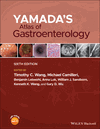Management of upper gastrointestinal hemorrhage related to portal hypertension
Summary
This chapter offers diverse images that provide an overview of management of upper gastrointestinal hemorrhage related to portal hypertension and aims to provide a synopsis through pictures and illustrations rather than through text. Portal hypertension results from an increase in and/or resistance to portal blood flow. Ultrasound imaging can demonstrate an irregular surface of the liver in cirrhosis and portal vein thrombosis, but computed tomography scan is preferred in patients with portal vein thrombosis to differentiate bland thrombosis from tumor thrombosis. In patients with recent gastrointestinal bleeding, active bleeding from a varix or a large fibrin plug on an esophageal varix identifies the varix as the source of bleeding. Bleeding may also be caused from postvariceal ligation ulcers which may be treated with hemostatic powder application. Nodular forms of gastric antral vascular ectasia may be refractory to argon plasma coagulation and require band ligation.



